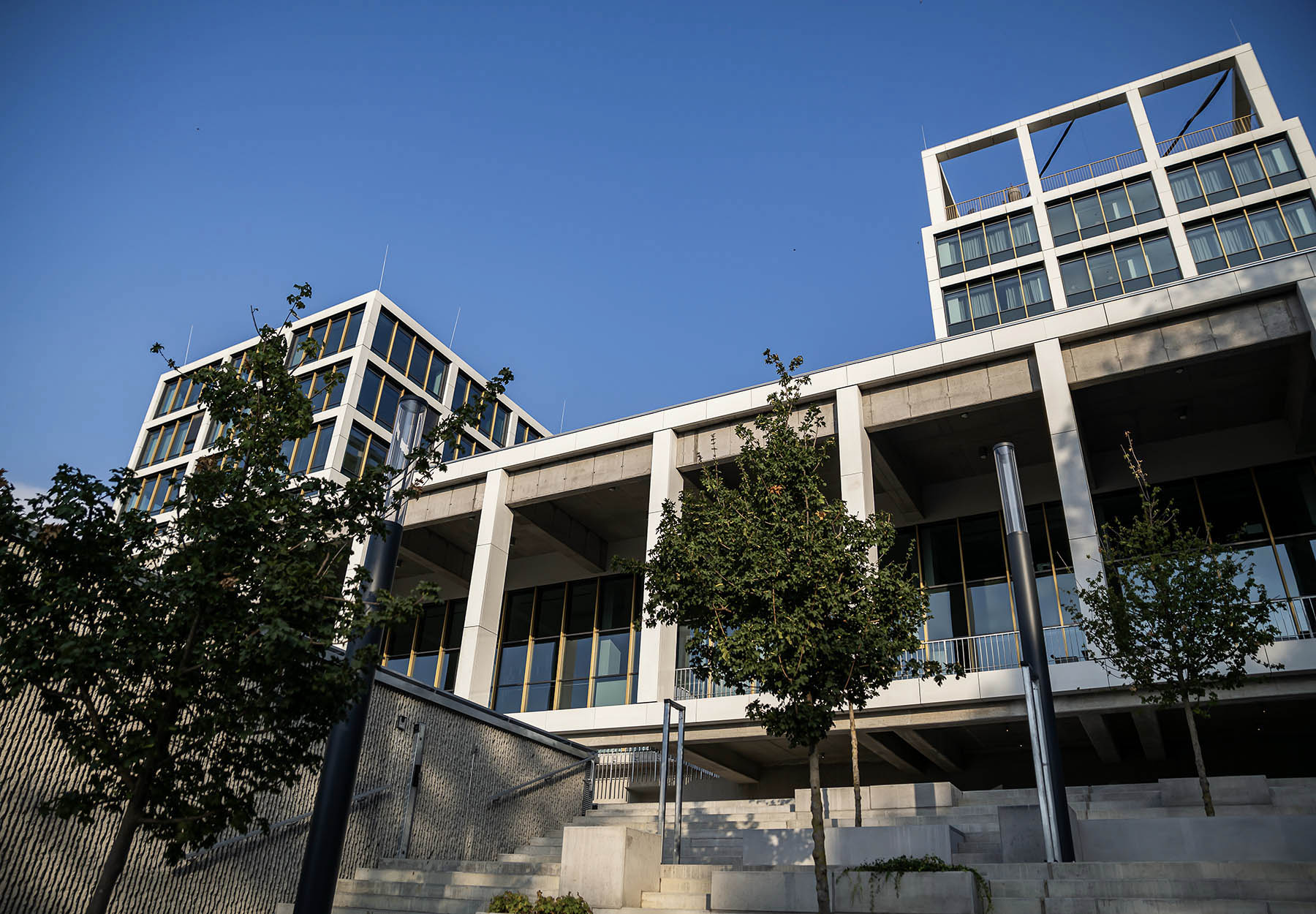The (re)birth of Gellert Campus– Space for Personal Experiences

The campus needed to be transformed in such a way, that would allow future generations to shape the institution according to their own needs. Alex Hugert (KGO student blog) reported on the event on 6 March.
The original building was once home to the College of Public Administration, and in 2019 it was given to the Maecenas Universitatis Corvini Foundation, which maintains the university. Tibor Misovicz emphasized, during the renovation the aim was to get the building down to the structure, but not to demolish it. Thus, the institution was reborn with the traces of the past, compromises, and innovative creative solutions.
Community participation was a key element of the planning process, as the university’s future could not be mapped out on a single drawing board. The aim was to design a concept for a university of the future that not only meets current needs but can also be freely developed in the future.
According to the project leaders, architecture is not just about creating static spaces. The building itself is a communicative tool that speaks, reacts, and shapes the lives of those within it, influencing the functioning of the university and community, and the well-being and performance of students.
For the designers, this project was much more than a simple renovation, as they also see transformation as an art form where the designer’s role is to facilitate the process. The idea for this, expressed at the conference, was that “the most effective way to be present in the future is to shape the present.” This idea is also represented by the ongoing transformation of the building, which is not a final state but a living, breathing community space.
During the planning process, several compromises had to be accepted due to the preservation of the structure, such as the original ceiling heights of the rooms. With the adaptations, the building has become a constantly evolving entity, not only an educational institution but a meeting place and a place of inspiration where learning and human interaction are intertwined. Rethinking the way learning takes place was essential to facilitate communication between professors and students, as well as collaborative learning between students, in addition to academic lectures.
Moving the entrance from its original location brought a significant change, as it upset the logic of the spatial structure, and a new spatial dramaturgy had to be developed. The main aim was to create openness rather than hermetic enclosure and to bring together interior and exterior spaces. The result is a dynamic in which students are both observers and active participants.
Designing a university campus in Budapest is always a unique challenge. Such a building should not only be functional but also reflect the city’s atmosphere, history, and future. For the reimagined Gellért Campus, one of the most important aspects was to create a sort of incomplete concept, allowing the space to be made whole by personal experiences.
Thus, the Gellért Campus is not a finished building but a living, constantly evolving, and developing university space. The transformation process is one of the most exciting in the life of the university as such, it has created a place that will live not only in the present but also in the future, offering a unique experience for all of us.